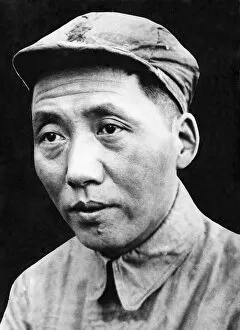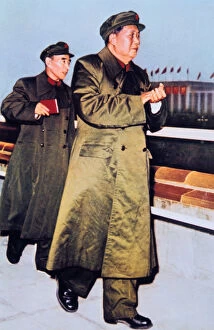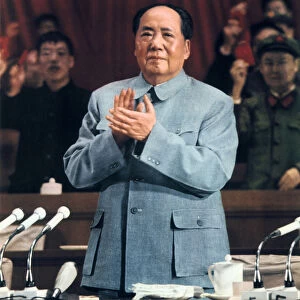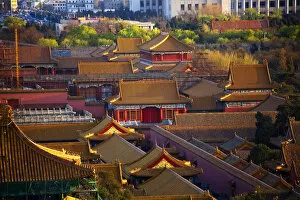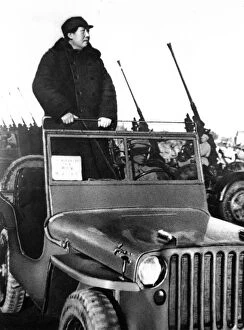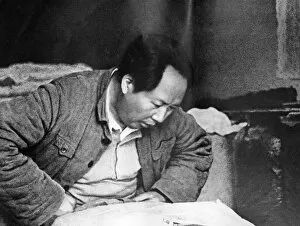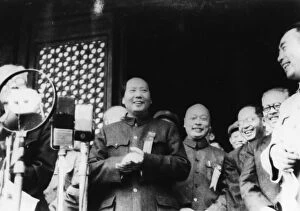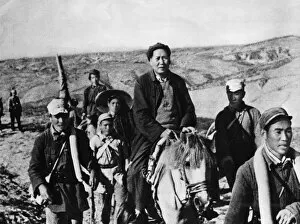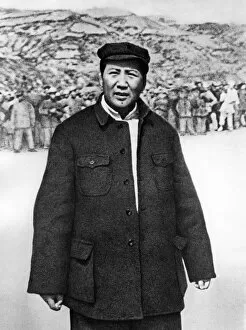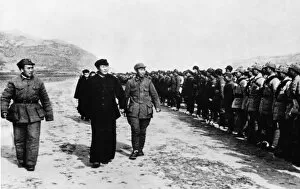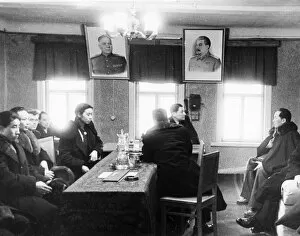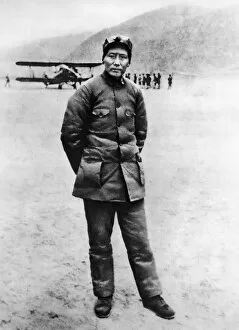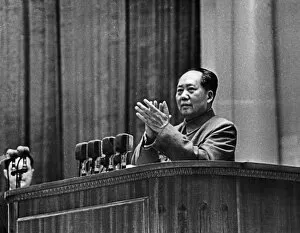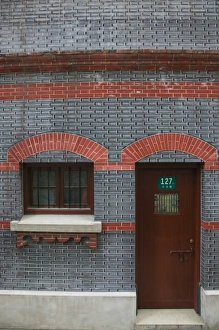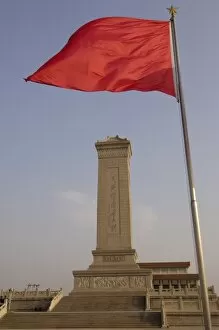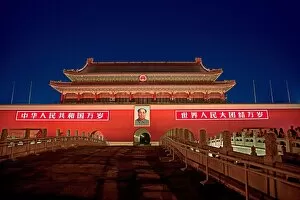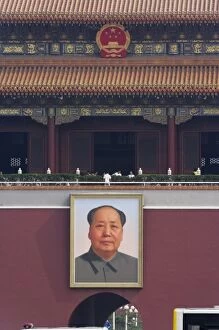Mao Zedong Collection (#2)
Mao Zedong, also known as Mao Tse-tung in 1937 or 1938, was a prominent Chinese Communist revolutionary and leader
For sale as Licensed Images
Choose your image, Select your licence and Download the media
Mao Zedong, also known as Mao Tse-tung in 1937 or 1938, was a prominent Chinese Communist revolutionary and leader. He played a pivotal role in shaping the history of China during the mid-20th century. In this captivating photo taken at the Gate of Heavenly Peace in Beijing's Forbidden City, we catch a glimpse of Mao alongside Zhou Enlai, his fellow Chinese Communist leader from the 1950s. The image exudes an air of determination and unity as these two influential figures stand side by side. As we delve deeper into Mao's legacy, we discover that his impact extended far beyond China's borders. Matryoshka dolls adorned with his likeness are available for sale at Izmaylovsky Bazaar in Moscow, Russia. This unexpected connection between two vastly different cultures serves as a testament to Mao's global influence. Back in China, security guards stationed on Tiananmen Gate protect the historic Forbidden City while paying homage to Chairman Mao himself. His model souvenirs can be found at Cat Street antiques market in Hong Kong Island, reminding us of his enduring popularity even decades after his passing. In Yangshuo, Guangxi province, visitors can immerse themselves in history through souvenir Communist posters that depict Mao's ideology and vision for China. These vibrant artworks serve as reminders of both the turbulent times he led and the lasting impact he left behind. One cannot ignore the iconic image captured by Xin Ke during World War II – "The more I fight, the stronger I become. " It perfectly encapsulates Chairman Mao's unwavering determination and resilience amidst adversity. Lastly, Marshal Lin Biao is seen holding up Chairman Mao's Little Red Book – an emblematic symbol representing their shared ideals and principles. This anonymous photograph captures their deep bond forged through revolution. Chairman Mao remains an enigmatic figure whose influence continues to shape modern-day China.

